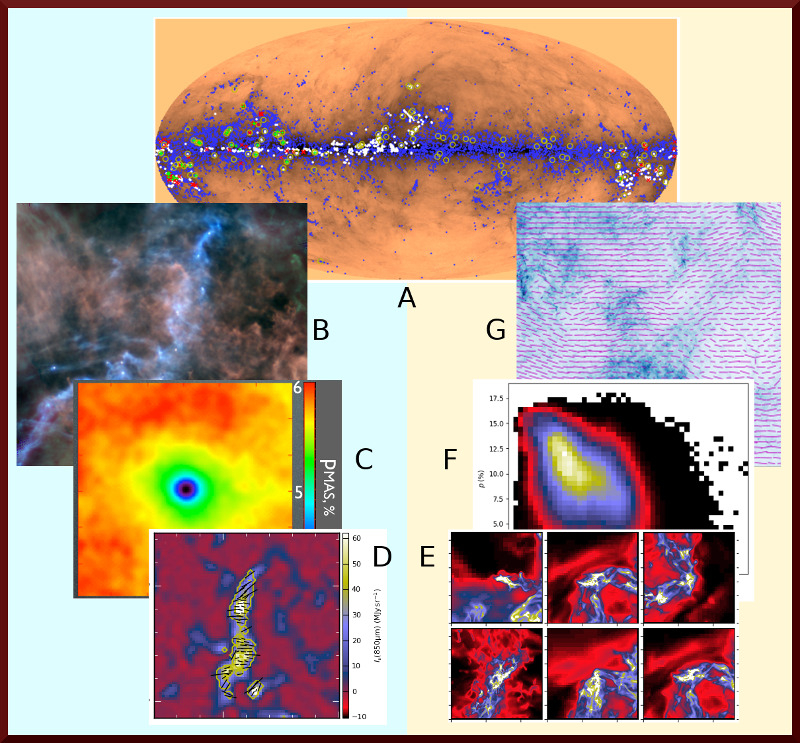
|
EPoS |
|
EPoS Contribution
|
|
Galactic Cold Clumps
Mika Juvela U Helsinki, Helsinki, FI | |
|
The Planck survey resulted in a new catalogue of Galactic cold clumps
that, based on their low temperature, are prime candidates as sites of
future star formation. The objects have been studied with further
continuum observations with Herschel (programme Galactic Cold Cores PIed by speaker)
and SCUBA-2 (programme SCOPE). Molecular
line surveys have been carried out with the PMO, TRAO, SMT, NRO, IRAM,
Effelsberg and other telescopes, in CO isotopomers but also in tracers
of dense gas (N2H+, HCN, HCO+, etc.) and of chemical evolution
(carbon-chains vs. N-bearing molecules).
The Planck clumps cover a range of objects from molecular clouds to already star-forming cores. Besides the physical and chemical state of the clumps, the observations trace the parallel evolution of interstellar dust. One important aspect in these studies is the sub-millimetre dust polarisation, which carries information on the magnetic fields but is dependent on the details of the dust evolution and the grain alignment processes. Dust opacity and spectral indices have been studied with Planck, Herschel, and SCUBA-2 data. These show a clear density dependence, indicative of processes like dust coagulation. Planck polarisation data have been used to investigate the relative orientation of filamentary structures and the magnetic field. Polarisation fractions have been measured for large samples of Planck clumps. The systematic decrease of polarisation fractions as a function of column density suggests a clear loss of grain alignment, which has implications on our ability to measure the magnetic fields inside the clumps. At higher resolution, the first SCUBA-2 polarisation studies have targeted the massive but quiescent filament G35.39-0.33. To support the analysis of observations, we have carried out extensive modelling of the clumps. Examples include the bias of column density estimates, the observable consequences of dust evolution, and the simulation of Planck and SCUBA-2 observations of the magnetic field geometry and polarisation fraction. I will present an overview of the main results of these studies and plans for future work. | |
 | |
| Caption: Studies of cold clumps. A: All-sky image showing the Planck PGCC catalogue objects (blue dots) and the targets of the SCUBA-2 SCOPE survey (white dots). B: Example of the PGCC fields, Herschel image of a star-forming filament. C: Planck stacking analysis of polarisation fraction in PGCC clumps. D: SCUBA-2 polarisation observations towards the massive filament G35.39-0.33. E-G: Modelling with MHD simulations and continuum radiative transfer: examples of high-mass star forming cores (E), polarisation fraction vs. column density (F), and a simulated large-scale polarisation map (G). | |
| Collaborators: I. Ristorcelli, IRAP, FR T. Liu, KASI, KR L.V. Toth, ELTE, HU J.Montillaud, UTINAM, FR On behalf of the Planck and Herschel Cold Cores projects and the TOP-SCOPE collaboration. |
Key publication
Suggested Session: Cores |